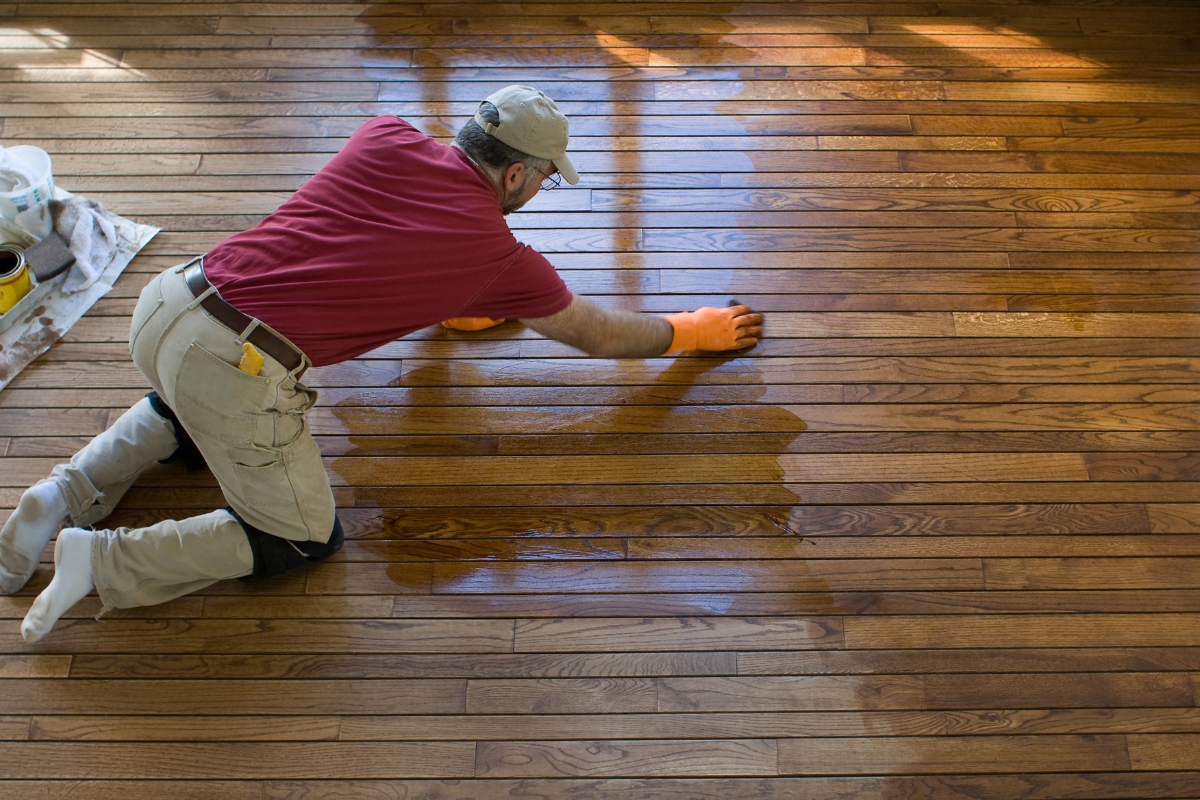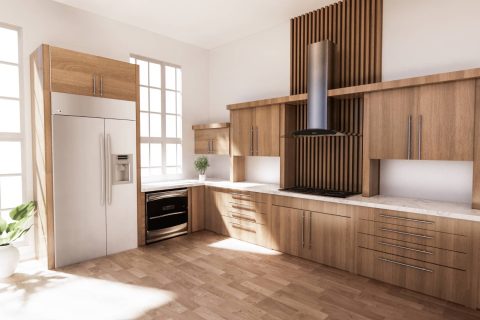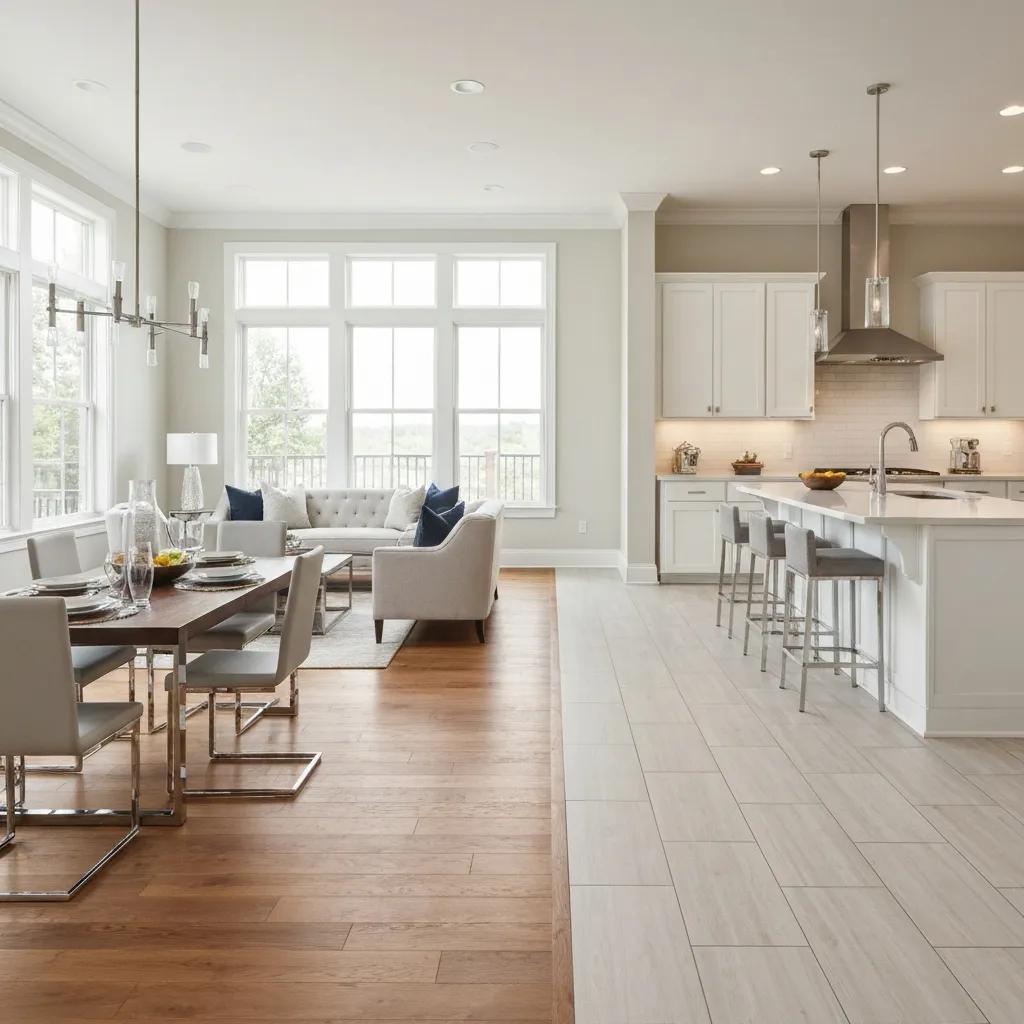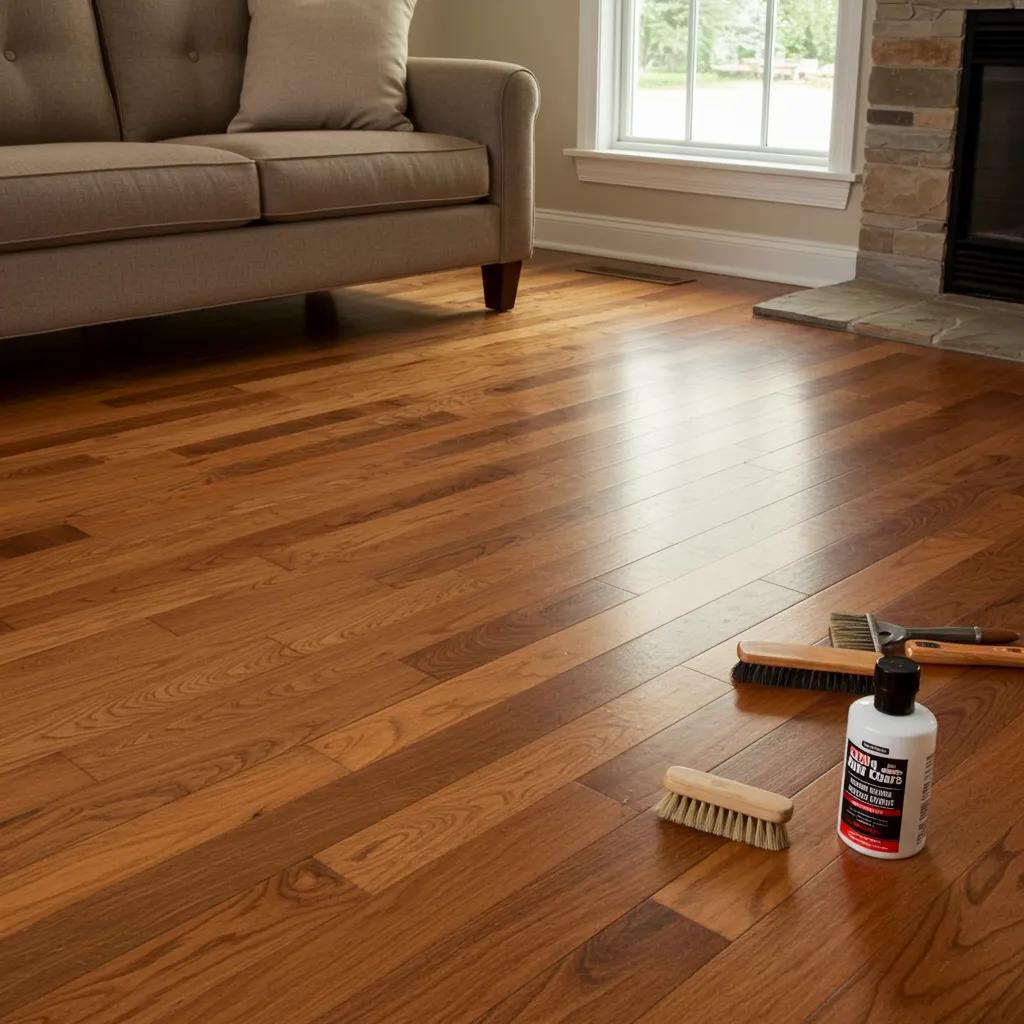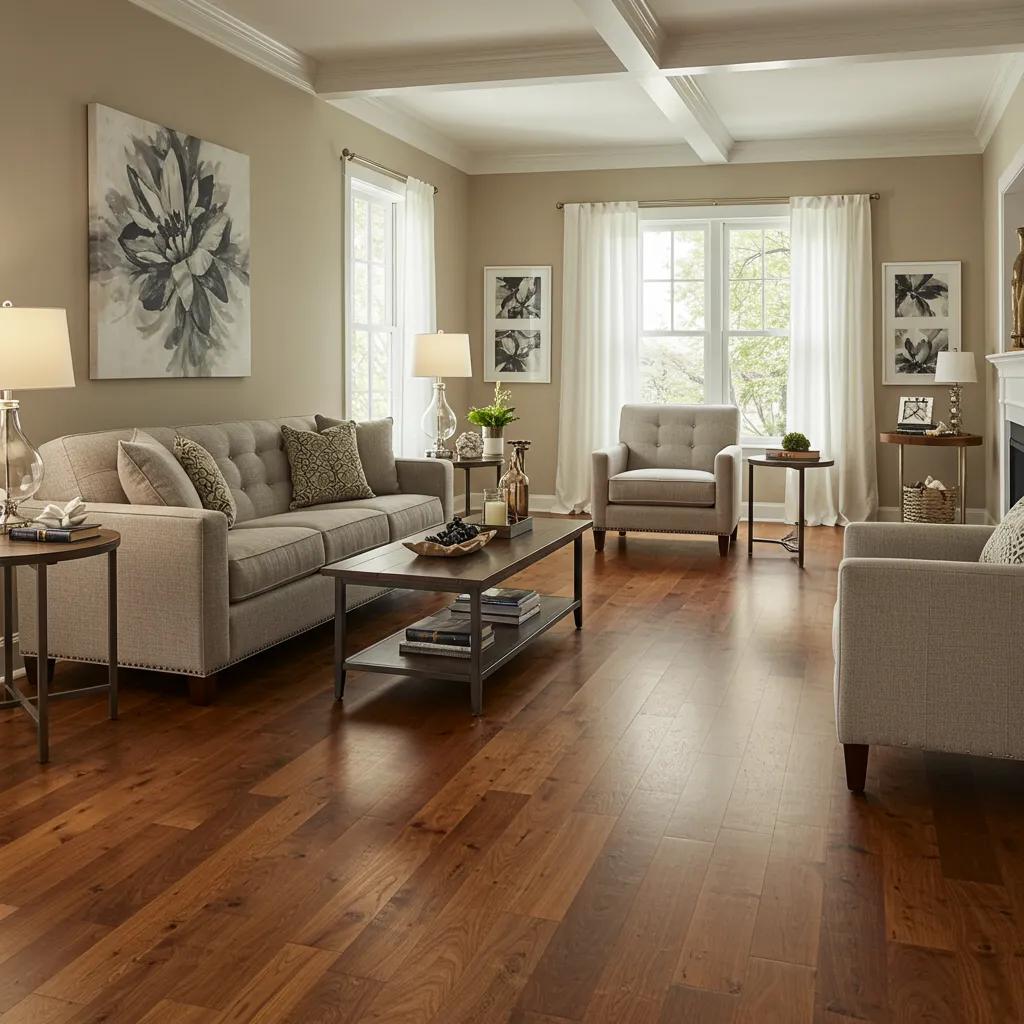Over time, even the most beautiful wood floors in Brookhaven homes can start to lose their luster. Daily wear, foot traffic, and minor damage can leave hardwood looking dull, scratched, or uneven. But how do you know when it’s time to refinish rather than replace? Recognizing the key signs—like visible scratches, discoloration, or splintering—can help you restore your floors to their original charm before problems worsen. In this guide, we’ll walk you through the telltale indicators that it’s time for wood floor refinishing and why taking action now can enhance both your home’s appearance and value.
Give Your Floors New Life with Wood Floor Refinishing
Why Wood Floor Refinishing Matters More Than You Think
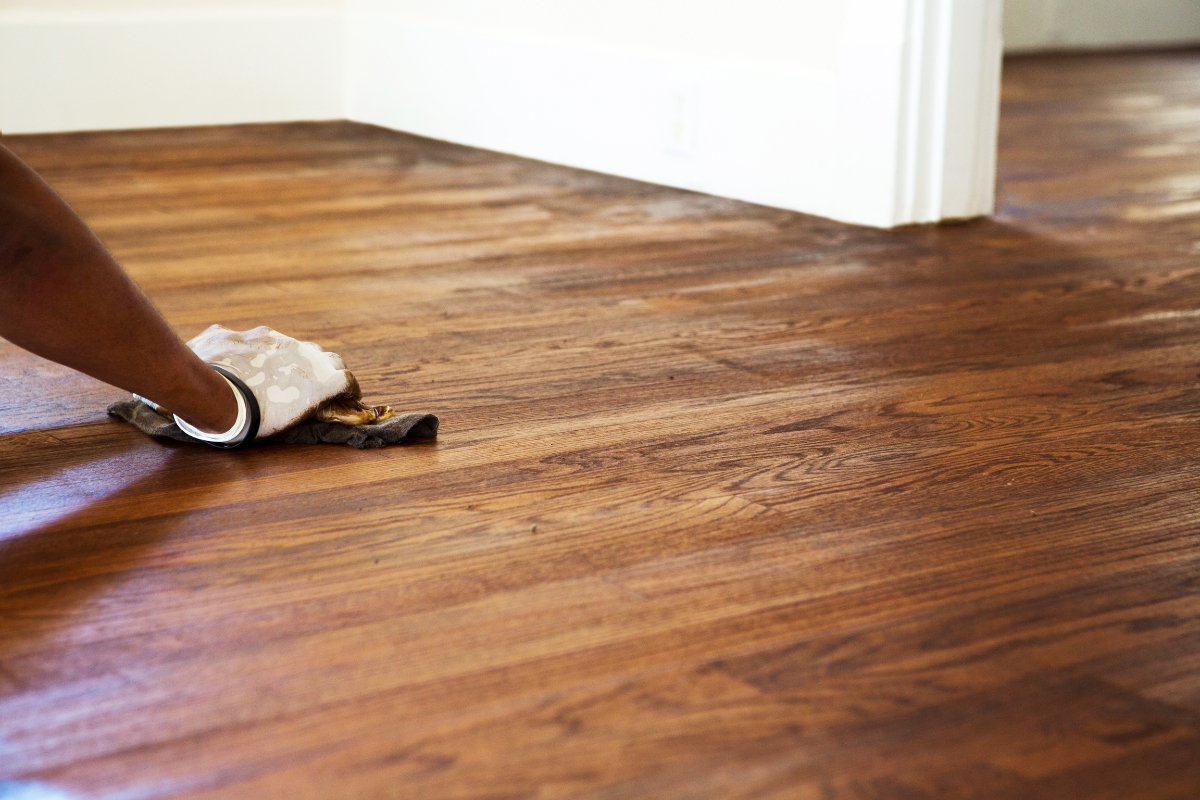
Wood floor refinishing isn’t just about making your floors look better. It’s a key part of keeping them in good shape for the long haul. Over time, daily use takes a toll. Shoes drag in dirt, chairs scrape back and forth, pets scurry across the surface, and even regular cleaning can wear down the protective topcoat. Once that finish wears thin, the wood underneath becomes exposed to moisture, stains, and scratches that can lead to permanent damage.
Refinishing solves this by sanding down the surface, removing the old finish, and applying a new stain and protective seal. This refresh not only brings back the original color and character of the wood but also adds a new barrier against everyday wear. In a climate like Brookhaven’s, where humidity can sneak into cracks and crevices, keeping that seal intact is especially important. Moisture in unsealed wood can lead to cupping, warping, or expansion—issues that are harder and more expensive to fix later.
There’s also a real financial benefit. Hardwood floors are a selling point for many buyers, but only if they’re in good condition. Dull, scratched, or uneven floors can make your home feel worn down. Freshly refinished floors, on the other hand, brighten a space and show that the home has been taken care of. The improved appearance can make a big impact during a showing or open house.
If left too long, floors that need refinishing may end up needing full replacement instead. Deep gouges, water stains, and even pest problems can take hold in neglected floors. But staying on top of refinishing every seven to ten years—or sooner in high-traffic areas—can help you avoid these bigger problems.
In the end, refinishing is both a practical and aesthetic decision. It protects your investment, extends the life of your flooring, and helps keep your home looking sharp. Whether you plan to stay put or eventually sell, taking care of your wood floors is time and money well spent.
How to Know If Scratches Mean It’s Time to Refinish Your Wood Floors
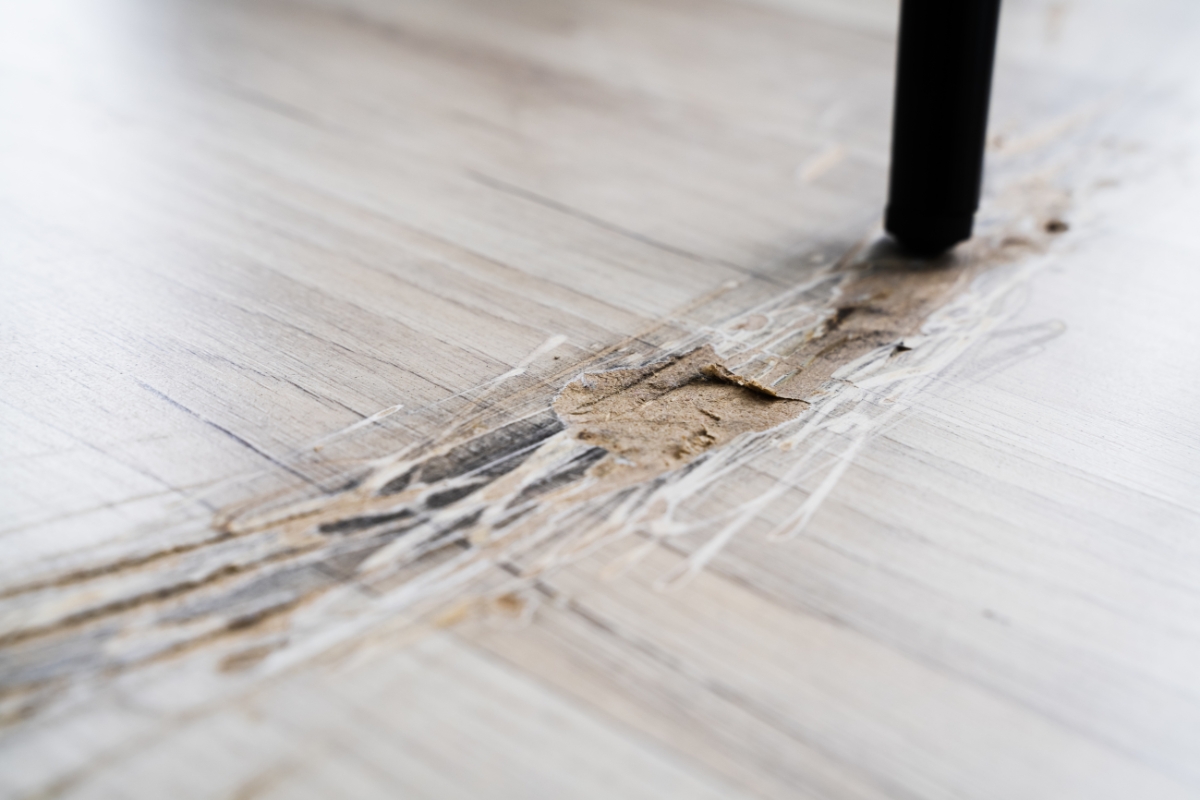
Noticing scratches and scuffs on your wood floors is more than a cosmetic concern. These marks are signs that the protective finish is wearing down. That finish isn’t just there for shine—it protects the wood from moisture, dirt, and long-term damage. Once it’s compromised, small issues can become bigger, especially in areas that get a lot of use.
Start by taking a close look at the scratches. If they’re light and only on the surface, you might be able to get away with a simple recoat. You can test this by running your hand across the area. If the scratches feel smooth or shallow, a quick buffing and a new coat of finish might be enough to restore the look and protection.
But if you can feel the scratch or if it looks like it cuts into the wood, the damage has gone deeper. These kinds of gouges can collect water and dirt, which leads to staining and eventually to warping or splitting. Touch-up pens and scratch removers won’t do much in this case. You’ll likely need to sand the floor down and refinish it completely.
Pay attention to how widespread the damage is. A few scratches in the corner might not justify a full refinishing, but if the wear is visible across entire rooms or high-traffic areas like hallways and living rooms, that’s a different story. In Brookhaven, with its mix of heat, humidity, and busy households, this type of wear builds up faster than you might expect.
Also consider the age of your floor’s current finish. If it’s been several years since your last refinishing job and scratches are becoming more common, it’s probably time. Refinishing not only erases the damage but also restores the barrier that protects your wood for the future. In short, visible scratches and scuffs are your floor’s way of saying it needs attention. Catching the problem early can help you avoid more expensive repairs down the line and keep your floors looking sharp for years to come.
Handling Faded and Discolored Wood Floors
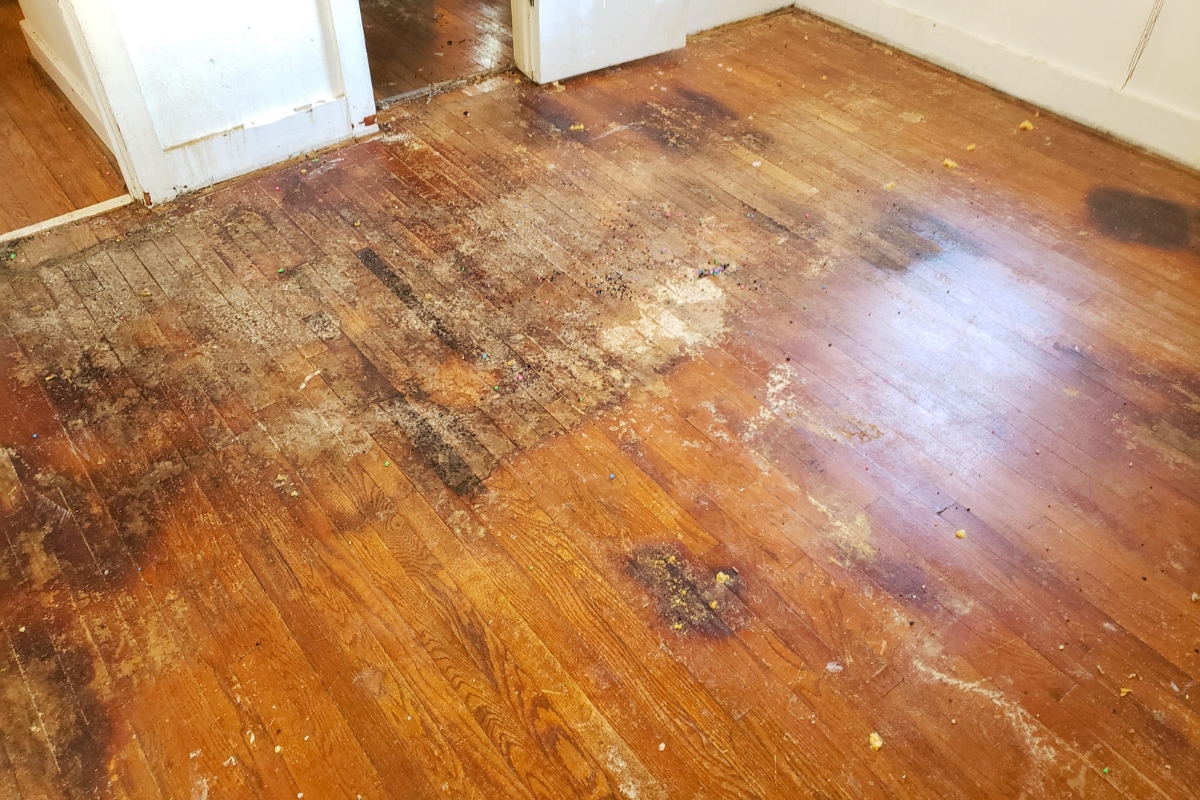
Fading and discoloration are clear signs that your wood floors are no longer getting the protection they need. Over time, sunlight coming in through windows can bleach the wood, leaving behind lighter patches that make the floor look uneven. Everyday foot traffic and the use of harsh cleaners can also wear down the finish, dulling the natural shine and making the surface look tired.
You can usually spot the problem by comparing different areas of your floor. Move a rug or a piece of furniture and check the wood underneath. If there’s a big difference in color between that hidden section and the exposed floor, the finish has likely broken down. This contrast shows that the wood is absorbing light and moisture in some places more than others, which leads to fading and uneven tones.
When that happens, refinishing is often the best solution. This process involves sanding off the worn top layer to expose the fresh wood underneath. Once the surface is even, you can apply a new stain to bring the color back to life and then seal it with a protective topcoat. The new finish not only improves the appearance but also shields the floor from further sun damage and wear.
In homes around Brookhaven, where sunny rooms and active households are common, faded wood floors are a frequent issue. While regular cleaning and the use of area rugs can help reduce fading, these steps only go so far once the damage is done.
Refinishing gives you a chance to reset. You can choose to match the original stain or go for a slightly different look to update your space. Either way, you’ll extend the lifespan of your flooring and restore a consistent, polished appearance. Don’t let discoloration sneak up on you. If your floors are starting to lose their color or look patchy, it’s better to refinish sooner rather than later. Addressing the issue early helps preserve the structure of the wood and keeps your home looking its best.
Assessing the Level of Wear on High-Traffic Areas
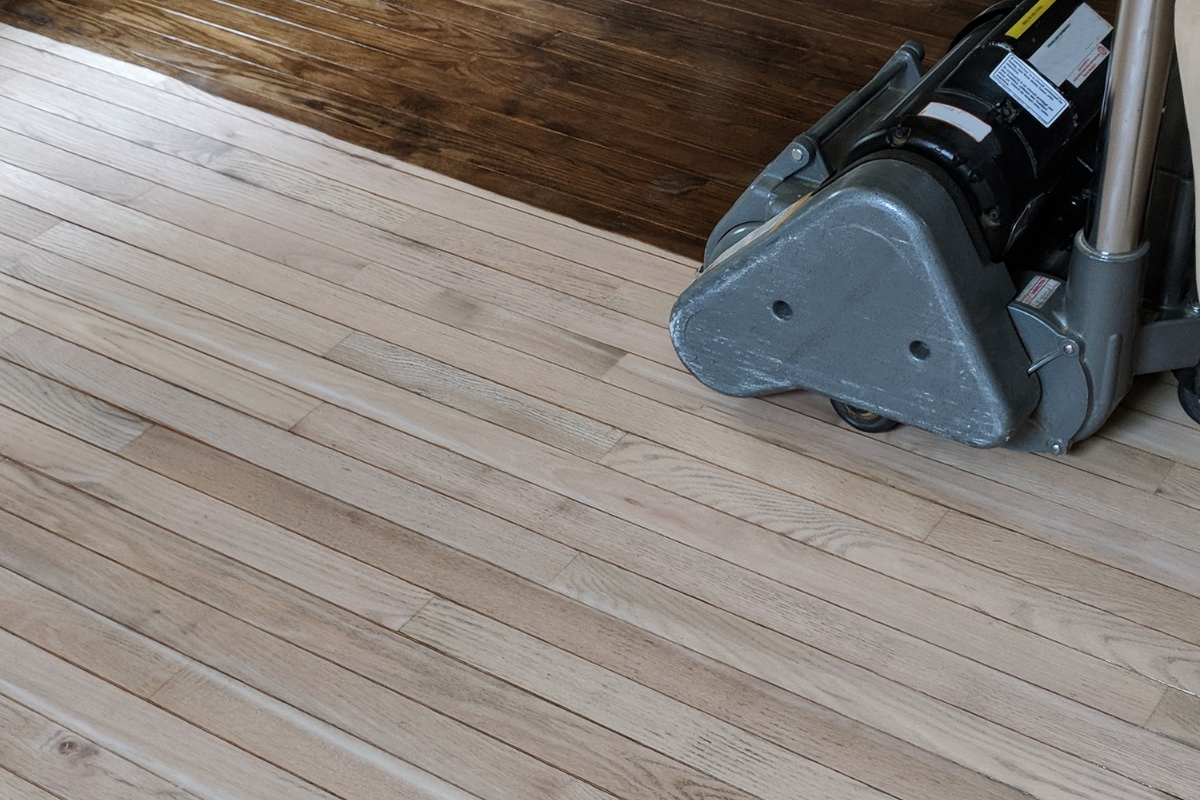
Areas like hallways, kitchens, and living rooms tend to show wear faster than the rest of your home. These are the places where foot traffic, dragged furniture, and dropped items take their toll on your wood floors. Over time, you may start to notice uneven sheen, surface scratches, or spots where the finish has worn off entirely. When parts of the floor look dull or feel rough underfoot while other sections still have a smooth, glossy look, it’s a good sign your floors need refinishing.
A quick way to check the condition of your floor’s finish is with a water test. Place a few drops of water on different parts of the floor. If the water forms small beads, the finish is still doing its job. If it sinks in quickly or spreads out, the finish has likely broken down and is no longer protecting the wood underneath. This test can help you figure out if you’re dealing with isolated trouble spots or if the entire floor needs attention.
In high-traffic spaces, refinishing is more than just a cosmetic fix. When the protective coating wears away, your floors are exposed to moisture and grit, which can lead to deeper damage like stains, cracks, or warping. If you catch the problem early, refinishing can remove the surface damage and restore the protective layer before the wood itself starts to break down.
It’s tempting to focus on only the worn areas, but spot-treating can create noticeable differences in color and texture. A full refinish ensures a smooth, even look across the whole floor, and gives you a chance to choose a new stain or finish if you want to update your space. For Brookhaven homeowners who value both style and function, regular checks and timely refinishing can help preserve the beauty and longevity of their wood floors.
If your home sees a lot of daily activity, don’t wait for deeper damage to show up. Pay attention to early signs of wear and take action to keep your floors in good shape for years to come.
Spotting Water Damage and Stains on Hardwood Floors
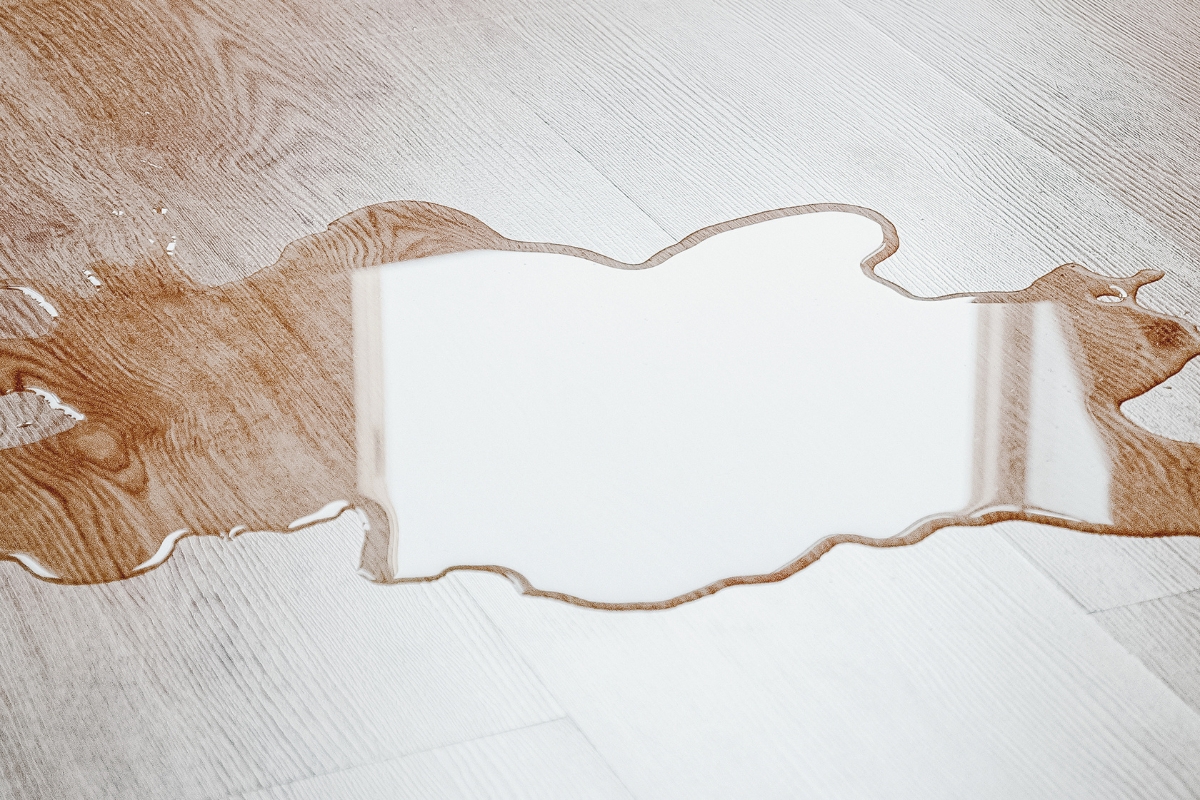
Water damage can sneak up on you. One day your floor looks fine, and the next, you notice a dark stain or a board that feels slightly raised. These are common signs that moisture has gotten past the protective finish. Whether the result of a slow leak, a spilled drink that wasn’t cleaned up right away, or just high humidity, water can leave lasting marks on hardwood. The most recognizable signs include dark rings, cloudy patches, cupping (when the edges of a board curl upward), and in some cases, musty odors from beneath the surface.
To stay ahead of the damage, inspect your floors regularly. Focus on areas near sinks, dishwashers, and entryways where wet shoes or dripping umbrellas might leave moisture behind. If you notice planks pulling apart, discoloration around the edges, or boards that feel soft when stepped on, your floor might already be showing structural problems. In those cases, refinishing alone may not be enough. Damaged boards should be removed and replaced before any sanding or sealing begins.
Not all stains are deep. Surface-level water spots, especially from small spills, can sometimes be resolved with light sanding. But when moisture has soaked into the wood grain, it often leaves behind stains that penetrate beyond the surface layer. These will require more thorough sanding or, in extreme cases, board replacement.
Once the visible damage is addressed, refinishing becomes a key step in preventing future problems. A fresh coat of sealant creates a barrier between your floors and everyday moisture. In a climate like Brookhaven’s, where humidity can fluctuate throughout the year, that protection is essential. If you’ve had past issues with water damage, consider using a higher-grade sealant that offers more moisture resistance.
Catching these problems early can make a big difference. Refinishing after water exposure not only helps restore the appearance of your floors, but it also prevents bigger headaches down the line, like mold growth or subfloor damage. With routine checks and quick action, your hardwood floors can stay in great shape for years.
Recognizing Changes in Wood Floor Texture
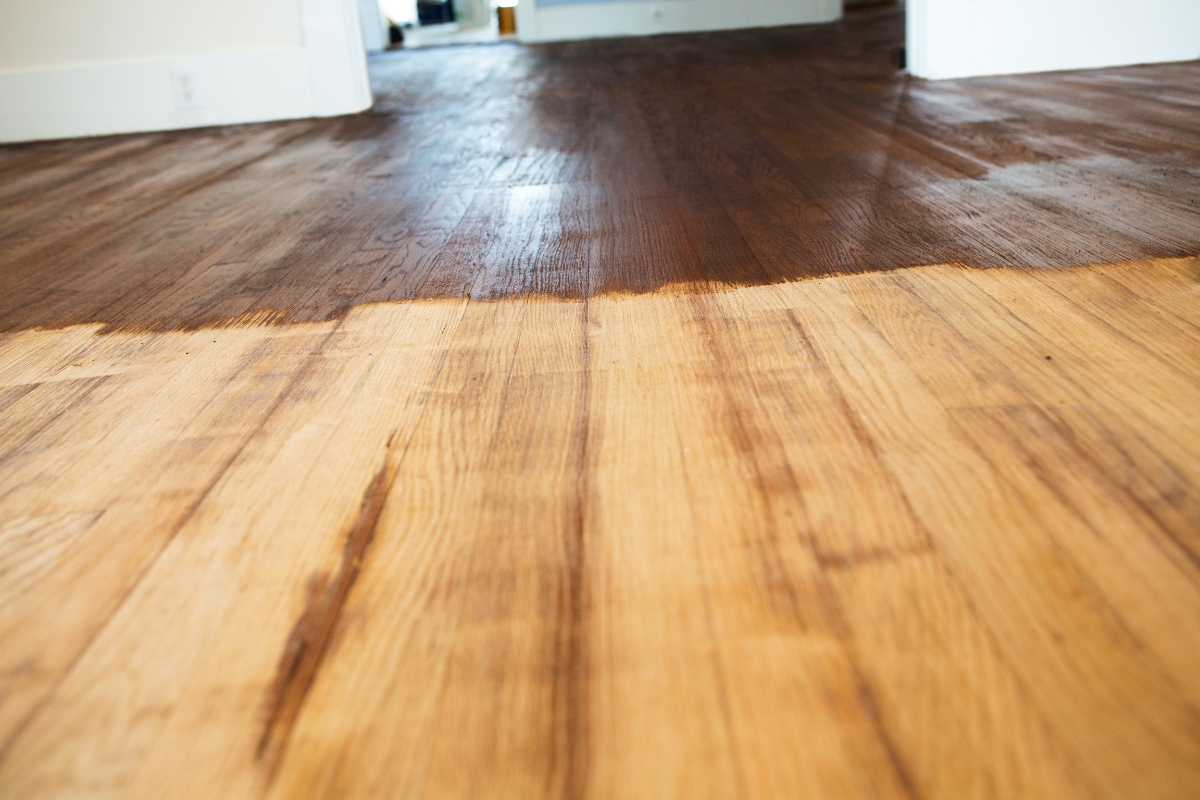
Over time, wood floors go through more than just color changes. One of the clearest signs they need attention is a shift in how they feel underfoot. If your once-smooth floors now feel gritty, dry, or even splintery in spots, the protective finish has likely worn away. This finish acts as a barrier against moisture, dirt, and everyday wear. When it breaks down, the bare wood underneath becomes more vulnerable to damage.
Pay attention when walking barefoot or in socks. If you notice your feet catching on certain areas or snagging fabric, that’s a red flag. You should also run your hand along high-traffic sections like hallways or entryways. A rough or uneven feel is a sign the surface needs to be refinished.
Visual cues are just as important. Stand at an angle to a window or light source and observe how the light reflects off the floor. A well-maintained finish will reflect evenly across the surface. Dull or patchy spots, where the light scatters or disappears, indicate that the topcoat has thinned or worn away. These inconsistencies not only affect the appearance but leave your floors open to dirt buildup, staining, and even long-term damage.
Addressing texture changes early is key. If you catch the problem before the wood fibers start to dry out or splinter, you may be able to restore the floor with a light sanding and fresh coat of sealant. Waiting too long can lead to more serious issues that require deep sanding or even board replacement.
In places like Brookhaven, where seasonal humidity can affect how wood floors expand and contract, keeping a close eye on texture is especially important. Refinishing not only brings back the smooth, clean feel but also protects the wood from moisture-related damage like cupping or warping. Changes in how your floor feels are just as important as how it looks. A simple texture check can help you catch issues early and keep your wood floors looking and feeling their best for years to come.
Considering the Age of Your Wood Floors
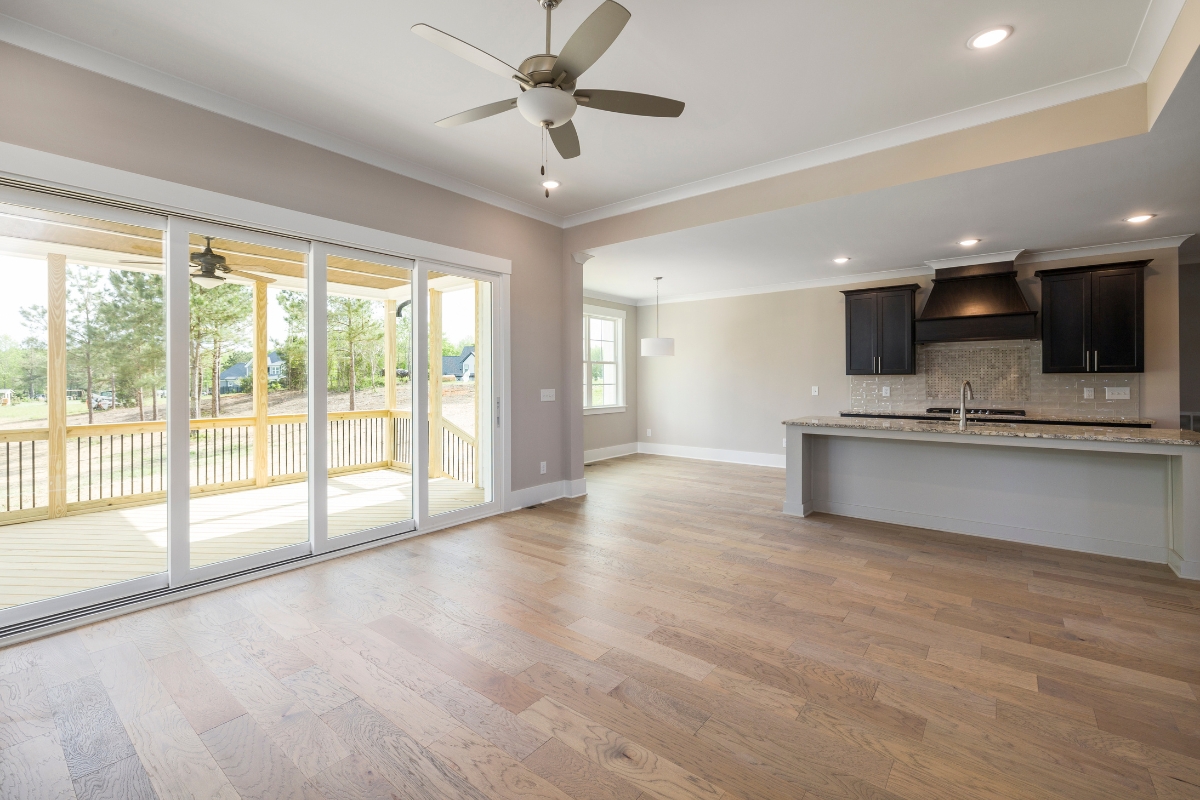
As wood floors age, signs of wear are inevitable. Years of foot traffic, cleaning, and shifting furniture gradually wear down even the toughest hardwood surfaces. The protective finish that once gave the floor its shine and shielded it from moisture slowly thins out. Eventually, the floor becomes more vulnerable to scratches, stains, and dullness.
For most homes, solid hardwood floors benefit from refinishing every 7 to 10 years. High-traffic areas or households with pets and children may need more frequent attention. Engineered wood, while still durable, can usually only be refinished once or twice due to its thinner veneer. Waiting too long between refinishings puts the raw wood at risk of deeper damage that’s harder to fix.
It helps to keep a record of when your floors were installed and the last time they were refinished. If you’re unsure of the history—especially if you purchased an older home in Brookhaven—it’s a good idea to have a professional assess the floor’s condition. They can determine whether a simple recoat will work or if a full sanding and refinishing is needed.
Another factor to consider is how your floor has aged visually. Oxidation from sunlight exposure can darken or yellow the wood, especially near windows or under rugs. Uneven coloring can make even a well-maintained floor look dated. Refinishing removes the oxidized layer and allows you to refresh the look with a new stain or simply restore the original tone.
Age also brings hidden wear. Over time, finish deterioration can lead to small gaps between boards, slight cupping, or surface roughness—all signs the wood needs care. Ignoring these issues can eventually shorten the lifespan of your flooring.
If your floors haven’t been touched in over a decade or you’re starting to see widespread fading, rough texture, or dullness, refinishing now can help avoid more costly repairs later. Regular maintenance keeps your wood floors not only looking great but also strong and protected for the years ahead. In a place like Brookhaven, where historic homes and classic interiors are common, maintaining your hardwood properly is one of the best ways to preserve both style and value.
Impact of UV Exposure on Wood Floors
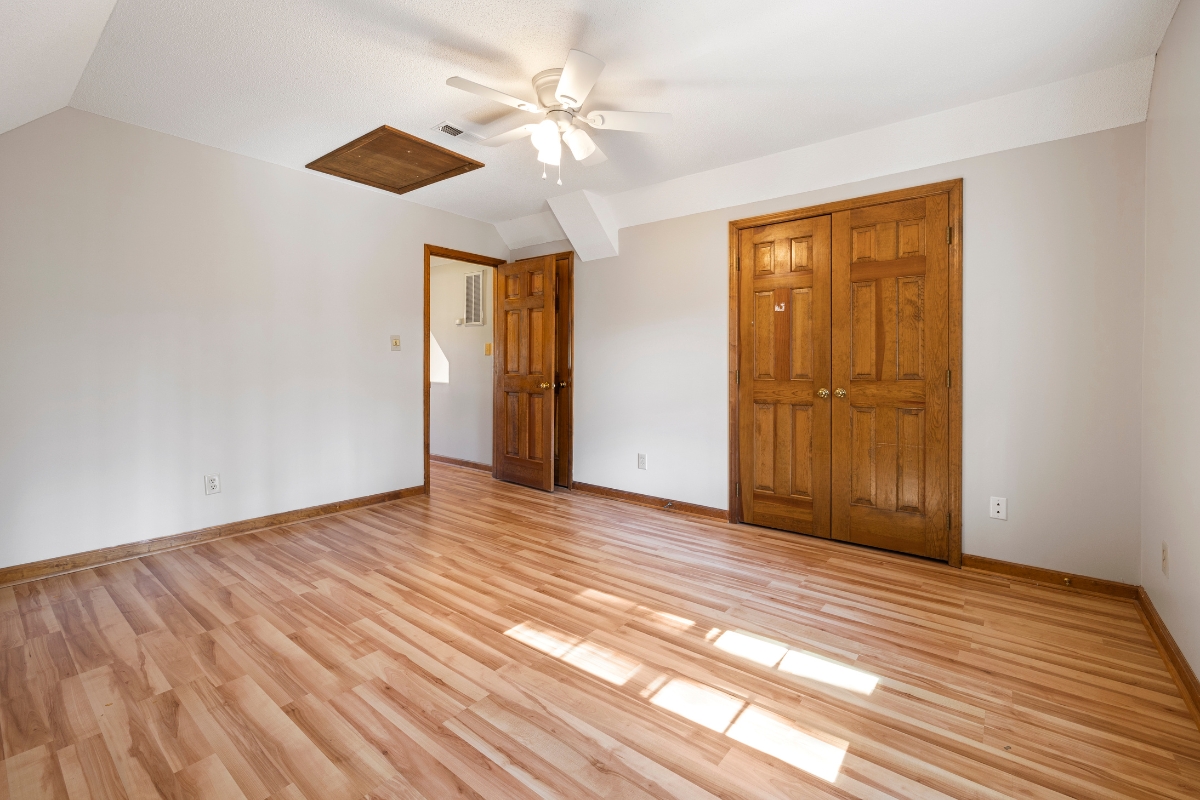
Sunlight adds warmth and brightness to a room, but over time, it can quietly damage your wood floors. Ultraviolet (UV) rays penetrate windows and gradually wear down the finish on hardwood surfaces. This exposure also affects the wood itself, breaking down natural compounds and leading to uneven color. Some areas may darken or amber, while others may lighten and appear washed out. These shifts are especially noticeable in Brookhaven homes with large windows facing south or west, where afternoon sun hits the floor consistently.
The signs of UV damage often develop slowly. You might first notice a noticeable difference in tone between areas covered by rugs or furniture and those exposed to sunlight. The contrast becomes more pronounced over the years, creating a patchy or faded appearance. While this may seem like a minor cosmetic issue, it often signals that the protective topcoat is wearing away, leaving the wood more vulnerable to scratches, moisture, and everyday wear.
To slow this process, there are a few practical steps you can take. UV-resistant window films offer an affordable way to cut down on harmful rays without blocking natural light. Another option is to use sheer curtains during peak sun hours. Rotating rugs or rearranging furniture every few months can also help distribute sunlight exposure more evenly, preventing deep contrasts in color.
If discoloration has already set in, refinishing your wood floors is the most effective way to restore a uniform look. This involves sanding down the damaged surface layer, re-staining the floor for consistent tone, and sealing it with a UV-resistant finish. These modern sealants don’t just improve appearance—they also protect the wood from future sun damage.
Addressing UV exposure early can extend the life of your floors and help them age more evenly. It’s also a smart way to maintain the overall appearance and value of your home. In sun-soaked parts of Brookhaven, planning for UV protection is an essential part of long-term wood floor care. With a little attention and the right preventative measures, you can keep your floors looking sharp for years to come.
Determining the Right Time for Refinishing
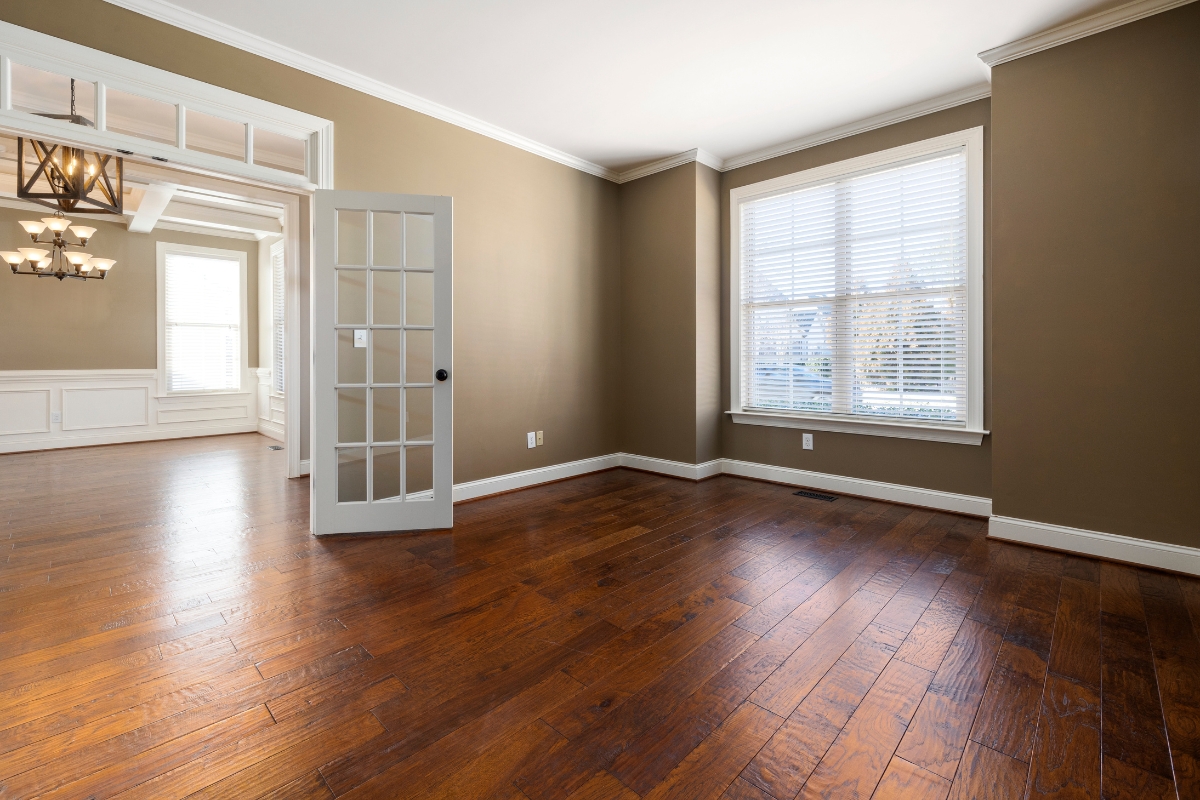
Deciding when to refinish your wood floors comes down to a mix of visual cues, surface performance, and practical timing. If your floors are covered in scratches, dull spots, or faded areas where rugs once lay, those are clear signs the finish is wearing thin. Changes in texture—such as rough patches or areas that feel dry to the touch—can also point to a weakened protective layer. Water stains, swelling, or discoloration near windows or sinks are other red flags. When more than one of these issues shows up at once, refinishing should be on your to-do list.
Homeowners in Brookhaven may notice these signs more quickly in high-use areas like entryways and living rooms. Frequent humidity changes, pets, and heavy foot traffic all take a toll over time. Addressing surface issues early keeps the damage at the top layer, where sanding and sealing can fix the problem. Waiting too long increases the chance that the damage will penetrate deeper, possibly requiring more costly repairs or plank replacements.
Timing matters for the refinishing process itself. Spring and fall are ideal seasons for this kind of work. Milder temperatures and balanced humidity levels help the stain and sealant cure properly, avoiding problems like bubbling, peeling, or extended drying times. Opening windows during these seasons is also more comfortable, which helps with ventilation and keeping odors from becoming overwhelming.
Another consideration is planning around your household’s schedule. Refinishing can take several days, depending on the square footage and drying time between coats. If you have kids or pets, or if you work from home, it’s worth planning for a temporary rearrangement during the project. You’ll want to avoid walking on the floors while they cure.
In short, don’t wait until your floors are in bad shape. If they’re starting to look tired or feel rough underfoot, it’s better to refinish sooner rather than later. Scheduling the work during a season with favorable weather and light household activity will give you the best results. Working with a local Brookhaven flooring professional ensures the job gets done right, adding years of life to your floors and freshening up your home in the process.
Conclusion: Maintaining the Timeless Elegance of Your Wood Floors
When visible wear, deep scratches, or dullness begin to detract from your Brookhaven home’s beauty, it’s time to consider wood floor refinishing to restore that showroom shine. Diaz Hardwood Floors offers expert flooring refinishing services that breathe new life into your floors, enhancing both appearance and durability. Call us at 404-791-0444 or get a free quote through our site form and discover how our professional team can revitalize your wood floors—bringing warmth and elegance back to your home.

